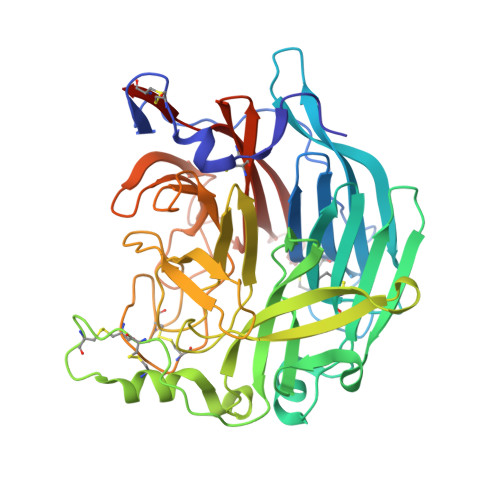The impact of the butterfly effect on human parainfluenza virus haemagglutinin-neuraminidase inhibitor design.
Dirr, L., El-Deeb, I.M., Chavas, L.M.G., Guillon, P., Itzstein, M.V.(2017) Sci Rep 7: 4507-4507
- PubMed: 28674426
- DOI: https://doi.org/10.1038/s41598-017-04656-y
- Primary Citation of Related Structures:
5KV8, 5KV9 - PubMed Abstract:
Human parainfluenza viruses represent a leading cause of lower respiratory tract disease in children, with currently no available approved drug or vaccine. The viral surface glycoprotein haemagglutinin-neuraminidase (HN) represents an ideal antiviral target. Herein, we describe the first structure-based study on the rearrangement of key active site amino acid residues by an induced opening of the 216-loop, through the accommodation of appropriately functionalised neuraminic acid-based inhibitors. We discovered that the rearrangement is influenced by the degree of loop opening and is controlled by the neuraminic acid's C-4 substituent's size (large or small). In this study, we found that these rearrangements induce a butterfly effect of paramount importance in HN inhibitor design and define criteria for the ideal substituent size in two different categories of HN inhibitors and provide novel structural insight into the druggable viral HN protein.
Organizational Affiliation:
Institute for Glycomics, Griffith University, Gold Coast Campus, Queensland, 4222, Australia.



























